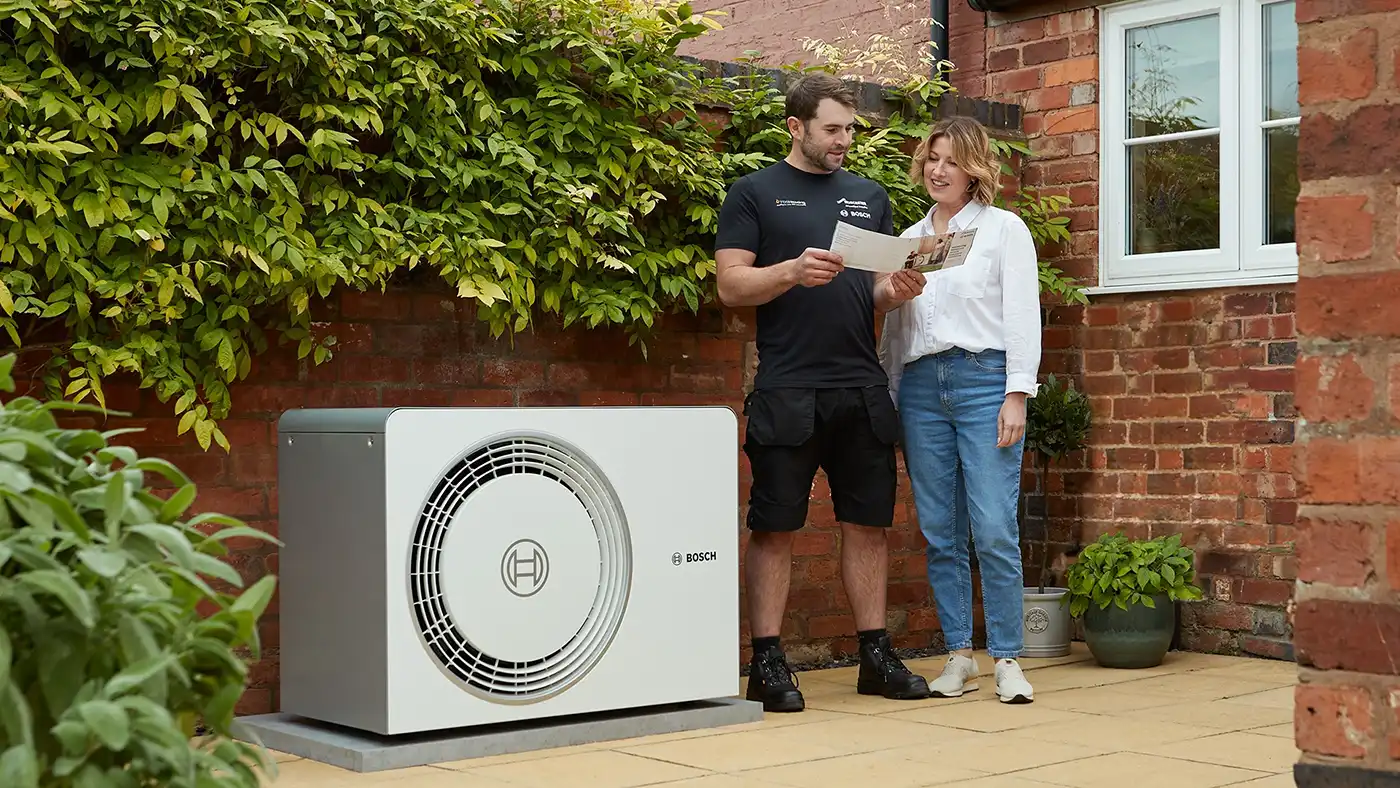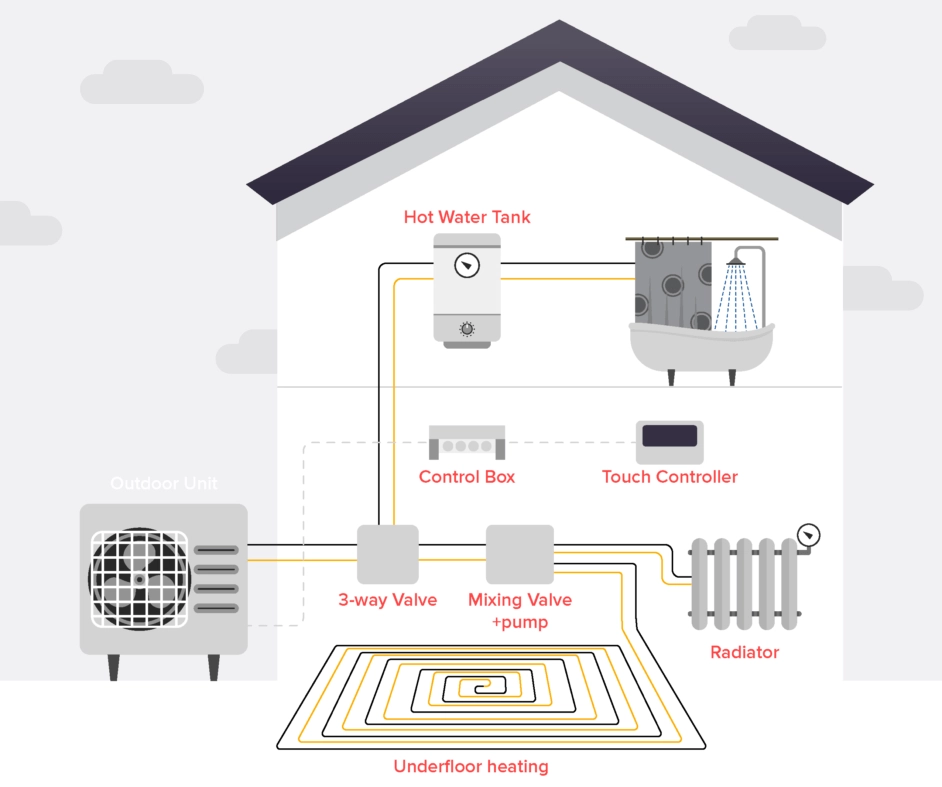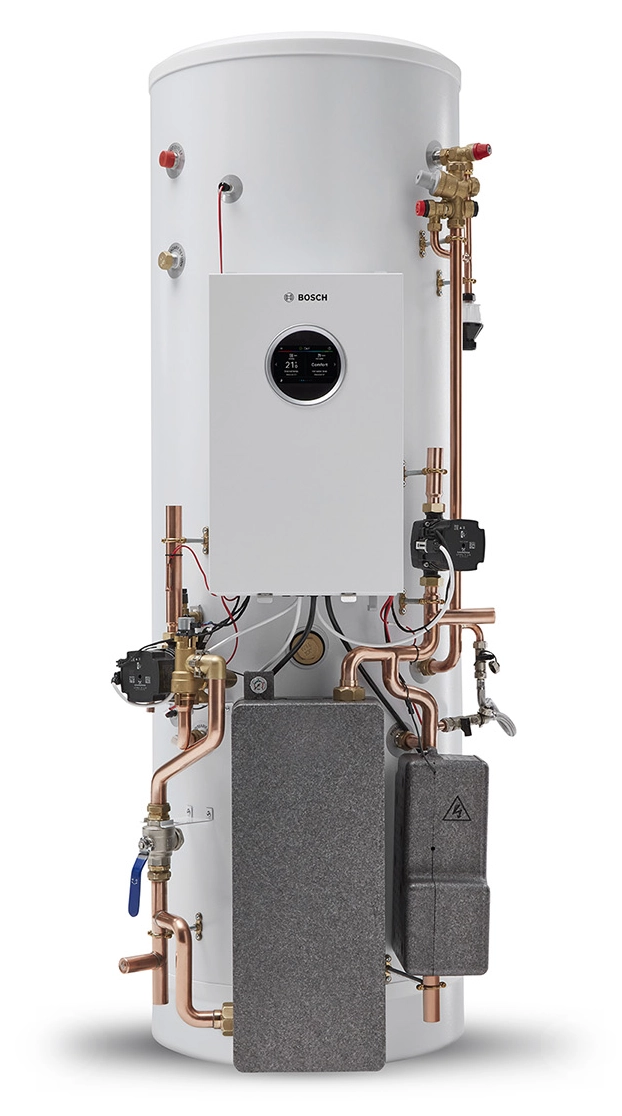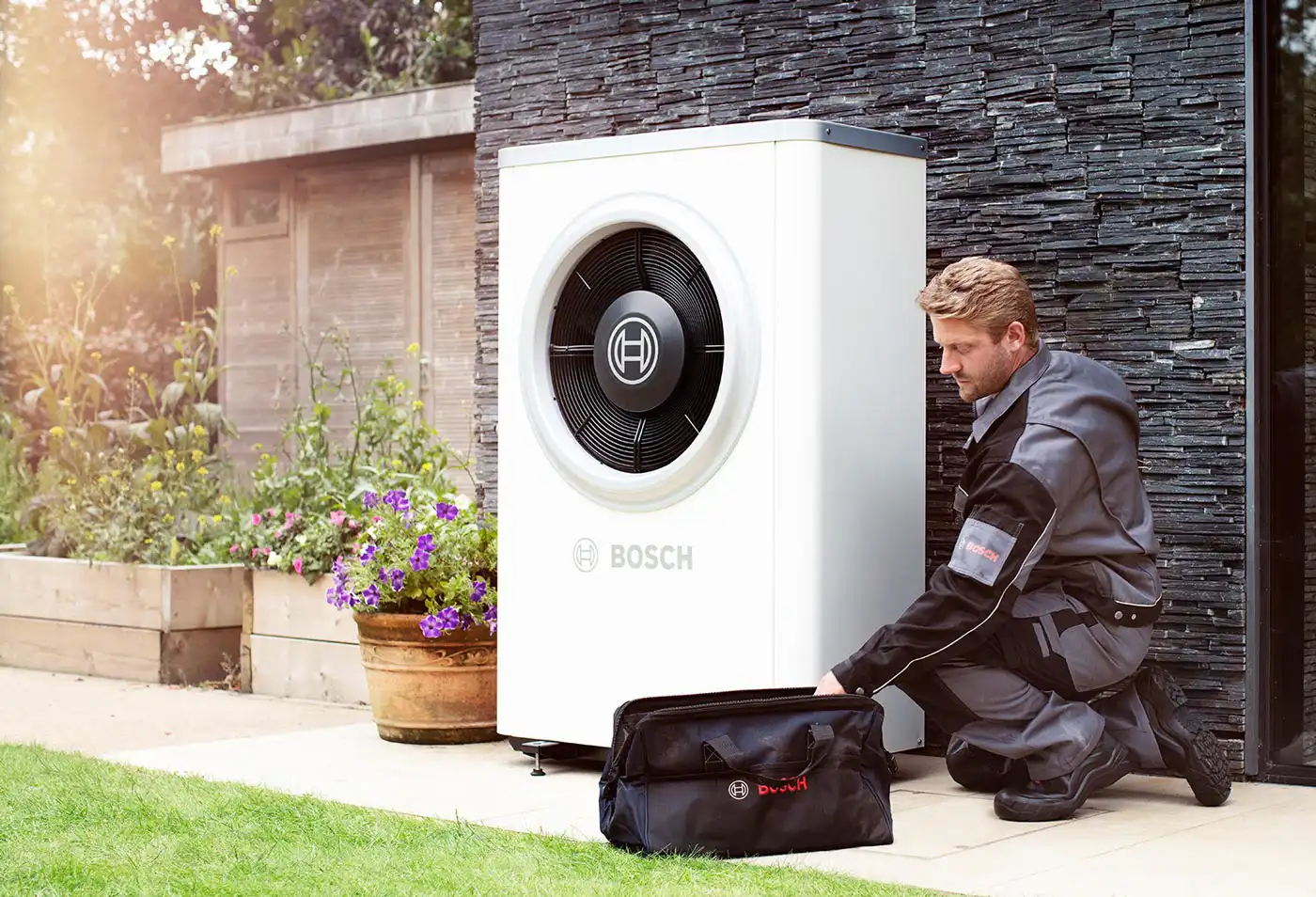
Air Source Heat Pumps
Air Source Heat Pumps Installation and Servicing.
Efficient, eco-friendly heating for your home or business.
Looking for a low-carbon, cost-effective way to heat your property? Air Source Heat Pumps (ASHPs) are a sustainable heating solution that extract heat from the outside air, even in cold weather, and convert it into usable warmth for your radiators, underfloor heating, or hot water system.
At Bushby Heating, we specialise in the supply, installation, and maintenance of air source heat pumps across across London, Surrey and Kent. Whether you’re upgrading your current system or installing renewable heating for a new build, our qualified engineers provide tailored advice and seamless service from start to finish.
Why choose Air Source Heat Pumps?
Lower Energy Bills – Reduce your reliance on gas and oil while cutting your heating costs.
Renewable Technology – Uses ambient air to generate energy, helping you lower your carbon footprint.
Government Incentives – Take advantage of schemes like the Boiler Upgrade Scheme (BUS) for eligible installations.
All Year Round Comfort – Works efficiently even in winter, delivering consistent warmth and hot water.
Expert Heat Pump installation in London, Surrey and Kent.
Our experienced team handles every aspect of your heat pump installation, from initial home surveys and system design to final commissioning. We only install trusted brands known for reliability and efficiency, ensuring long-term performance and warranty coverage.
Heat Pump servicing and maintenance.
To keep your air source heat pump running at peak efficiency, we offer annual servicing and fast-response maintenance. Regular servicing can extend the life of your system and maximise your energy savings.



NIBE Pro Installers
As certified NIBE Pro installers with over 15 years of experience, we specialise in installing and maintaining NIBE’s advanced heat pump systems. Trust our expertise to deliver efficient and reliable heating solutions tailored to your needs.

Interested in switching to an air source heat pump?
Contact Bushby Heating today for a FREE, no-obligation quote. Our experts are happy to assess your property, explain the benefits, and help you access available grants or funding.
Contact us at 01959 571867 or sales@bushbygas.co.uk, or book an appointment online.
Low-carbon, cost-effective heating with Bushby Heating’s Air Source Heat Pumps.









